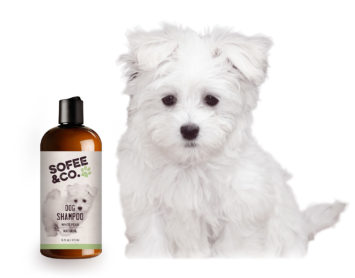Tears Will Be Shed
If you have (n)ever been a parent of a newborn baby, after your first night listening to your puppy or rescue dog crying from its crate, you will quickly understand that those tugs at the heart-strings are real. After a few more nights like the first, and you might feel like explaining sheepishly that you just aren’t cut out for dog ownership!
Never fear. Yes, tears will be shed, and some of them will be your pup’s and some yours, but the more you understand about why your dog might be crying in its crate and what you can do for your four-legged friend, the better.
Let’s take it a step at a time to discover ways to help your doggy relax inside a crate and stop her crying, so her owner can relax a bit more too.

A Crate Appeals to Your Dog’s Den Instinct
The story with crates is that they are like a den or a cool little fort for your dog – remember the cool living room cushions forts as a kid?! Wolves and wild dogs sleep in dens for safety as well to have a spot to be comfortable and even cozy. Experts know that your urban or rural pooch also needs a doggy den, a happy place for seeking refuge from the hustle and bustle of the world of their two-legged friends.
Wild dogs are pack animals, and our dogs at home also like to be part of the family action. And then every once in a while, like us, they want and need a spot to get away from it all. Dens are enclosed, dimly-lit, relaxing places; giving your dog a place of her own for when she is over-tired, sick, or just needing a break from the dog’s life can be a real gift.
Want more good news? Wild animals do not soil their dens, and the crate for the dogs we are hoping to housebreak works the same way! If you set your dog up well in a comfy crate and follow smart training tips, she will eventually feel secure in her den-away-from-home inside your larger house. And best of all, she will learn as you train her to do her doggie essential business far away from her den-crate.
The Pros: Crate Training Has Multiple Benefits
Baby steps and keeping in mind the multiple benefits of crate training will get you and your pooch through the first early days and long nights of pet ownership, and so will practicing your yoga breathing and your patience!
Stay motivated by remembering that a crate will help contain your little chewing machine! When you see proper crate training all the way through, then you no longer have to worry about the phone cords or your shoes you forgot on the floor or the wool rug from that great vacation.
If you stick with the plan and do your all crate training homework and practice, eventually your doggy will understand that she’s always got somewhere to go during the fireworks and when the claps of thunder ring in storm season.
Have Dog, Will Travel: Choose the Right Crate
Once you start scouring the market for what’s out there, you will quickly see that there are tons of great options for creating the perfect den and matching your dog’s crate with your new owner’s lifestyle.
Depending on the model of crate you choose, some can double as your doggie-hotel on a vacation with family or friends. Check your favorite airline’s kennel specifications and pet travel regulations.
What to look for in the crate to dry your doggy’s tears? Ask yourself three simple questions:
- What do I want the crate to be made out of?
- How big or small should the crate be to best fit my dog?
- Is it secure to leave my dog in this crate?
Using your common sense and some quick online searches, you can find answers easily to these questions that will let you find best crate for your dog.

Make Doggy’s Crate Homey
Whichever Crate you end up with, there are a few things to keep in mind.
Ease her into hanging out there. Read on to find the step-by-step process in detail. Just start with the idea the crate will be a fun-to-visit place. Imagine that you are in charge of those home makeover shows for your pup’s new digs. Think yummy food, cozy dog bed or blanket, and top-rated “chewy” toys, like old shoes—you can design a real Crate Retreat.
Hot tip! You can control whether your dog can see you with a strategically-placed blanket. Sometimes a nice dark room helps us all relax!
Take it Slow! Great Crate Practices
First: Have a housewarming party! Give your doggy a chance to stick her nose in, grab a treat, and sniff around.
If you take the time to introduce your dog to the crate like she’s a VIP, she will want to come back. If like you invite the doggy to a fun place with a tasty snack where, at first, she stays only as long as she likes, she is more likely to become a returning satisfied customer.
Second: Puppy’s New Supper Shack – make sure that doggy sustenance is delivered in the crate and she will find more to love about it.
If the doggy party snack was the hook, her meals will be the line and sinker. Set up a routine that mealtime takes place in the crate, and your pooch will get excited to come back for more.
Third: Practice makes perfect. A little bit at a time, inch up your pup’s Crate Time, and mix it up!
Fourth: Make a quick escape. Actually leave the house. Consider filming what happens when the cat’s away!
Once you feel confident that the meltdown probability has dropped sufficiently, take yourself out and leave your pup in for a test run. Choose an amount of time your dog is already comfortable with in the crate.

Fifth: Yes, the Puppy CAN Sleep Over! The main event is for your pup to sleep overnight in the crate.
If you work up to this step patiently, you and your furry friend should be well on your way to enjoying life with a new den. Another thing to keep in mind with the first overnights in the crate is to keep the crate close enough to you to hear any doggy noises. You can count on getting the signal if your four-legged friend has some business to take care of during the night.
It’s helpful for dogs of all ages to start out with the crate in a location that is still near enough to where the action is in the house. Both puppies and adult dogs experience fear of missing out on whatever fun the pack is up to. Even if it’s just Siesta Time, it’s nice to keep hammocks close together.
Newsflash: Puppies Cry (especially on First Night in Crate)
New parents read books because they want to know what to expect. As a new (puppy or adult or rescue) dog owner, you should read more too, but for now know that you can expect your new sweet critter to cry and whine through the transition of coming to live with you. And there’s a real reason why.
When we see pictures of puppies, we see lots of them at once. They are born in large litters and hang out in puppy piles when they are young. And then the time comes where modern puppies usually go to a home with only humans (or maybe a cat or another pet).
When the doggy starts sounding like a siren, it’s probably not the cat that sets her off. It’s been pointed out that wild dogs in nature used crying and whining as a means of protesting being left out of the pack or left behind by their mother. That way, they were less likely to be picked off by one of those (much bigger cat) predators and keep mom close by to hush the whining and keep things quiet. Just crying to get by!
It will just take a while and a little help from her caring owner for your pup to get used to this new world order.
Your dog will be anxious and will cry upon first arriving at its new home, and then again when your pooch is away from you and in her crate for the first time. You’ll be set up for success if you can make this happen as soon as possible after your pooch has moved into her new home with you.
Been a Long Time… Still Crying in The Crate
So now you are tuned in to the fact that at the beginning, puppies and rescue dogs will cry as they adapt to their new surroundings.
But maybe after a while, and after many more of those long nights, you just can’t shake the feeling that THIS much crying really is too much crying! It just sounds so desperate, the quiet sobbing or endless sniffling in from the crate corner.
Another answer may be that your puppy that is crying may just want to hang out. A tip to also keep in mind, is that as you are increasing crate time, make sure that lots of tiring fun is had before it’s time for your doggie to go into the crate. Yummy meals, fun toys, running and jumping games, training activities and practice are all great ways to keep your pup chipper and ready to get some chill out time or shut eye.

Remember These Hot Tips for Smart Crating
- Be mindful of the maximum time that any dog spends in a crate – during the day it should be less than 3 hours.
- Introduce your new dog to the crate as soon as you can.
- Remember to keep the pup’s crate near the family action.
- Maximum your doggy’s crate time while asleep- you can plop her in there if she snoozes on the couch to show her where her real bed is.
- Lots of short, fun Crate Time sessions at the beginning help lay solid groundwork.
- Remember that toys and treats can both be rewards, so keep mixing it up!
- Dogs usually keep their dens clean, but if there’s an accident, clean up right away to get rid of any marking scent.
- Carefully choose the right crate size for your adult dog to be able to move in a circle while standing and stretch all the way out.
- Use a predictable command each time your dog goes into the crate.
Doggy Feelings: Loneliness, Boredom, Fear
If your best friend misses you, she will probably cry out of loneliness. She may also have nothing else to do, which is why she is barking constantly out of boredom.
Something else to consider, is that if you cut any corners with crate training, your pup could just be feeling afraid of the crate for any number of reasons. Go back to basics and re-set the crate clock with the first training steps again, or keep in mind these final considerations.

How About One More Lap Around the House?!
Whining out of Nowhere?! Meeting Your Pup’s Essential Needs?
Once you get into the routine of things, you may still run into nights when your doggy is trying to communicate a new need. All dogs that make a fuss in the crate would like to get out, but sometimes it is a physical need driving the behavior. Keep an eye out for your doggy crying wolf over time, though –she will notice that the crying gets your attention. Also remember that some dogs experience true separation anxiety, which should best be addressed by checking in with your veterinarian, a trainer, or an animal behavior specialist.
Good luck with your new furry friend, keep in mind the tips you’ve learned, and here’s to future days and nights with no tears.


![12 Best Dog Foods for Toy Breeds [Buyer's Guide] 12 Best Dog Foods for Toy Breeds [Buyer's Guide]](https://shihtzuexpert.com/wp-content/uploads/2019/05/3-5.jpg)

